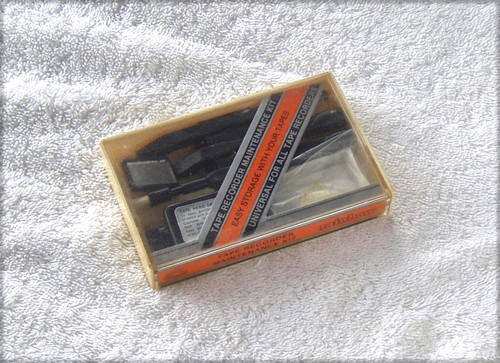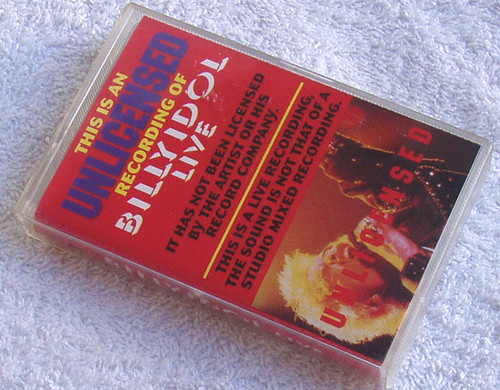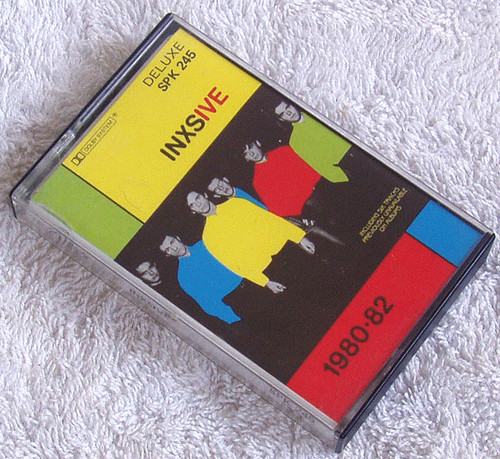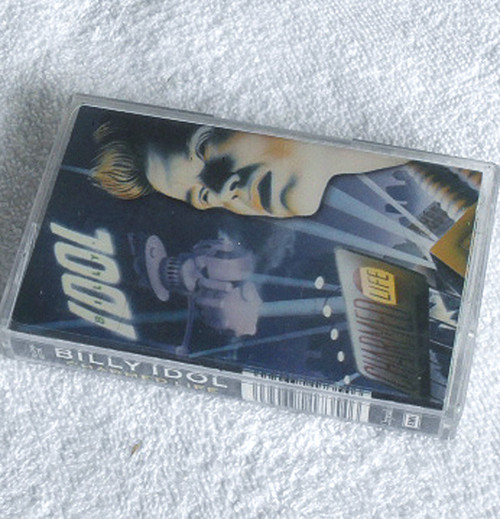HISTORY:
Oh my, how long since I have had one of these running!
Sit back and READ everything I am telling you ... this is how you will be able to judge if this gear is of worthwhile interest to you, either for restoration or as a "component farm" for another MT120
These 4 track machines (often just called "4 track") were commonly used by artists and bands many years ago as they were much easier to handle than large and heavy R2R machines and DAT was not in vogue (or affordable) at this time, this was the early 1990's. Most peformers in the industry didn't (and still don"t) have a lot of money but these 4 tracks were "sort off" affordable at around $800 in 1990's money. Many older muso's will have fond recollections of their experiences with 4 tracks, they were often used to create demo's for the A&R guys at the labels and live on-stage performance recordings.
This particular machine was bought over with me from NZ in the 1990's and it was used by various bands over there in the good ol' days. My focus in those days was the NZ indie scene which produced a genre commonly referred to as "The Dunedin Sound" - many many NZ bands used these 4 tracks and a couple of guys of special note are Chris Knox and Doug Hood who formed the fiercely independent record label, Flying Nun. Many of their recordings were made on a 4 track (not this one!) They were an inspiration so I had to get one of these 4 tracks as well!
So, I moved over to Australia (not enough people and too many sheep singing baaa baaa all day long - I was in the Canterbury area) and dragged all my old gear with me, including this Yamaha MT120. For the last 30 odd years it has been sitting in a box, waiting to enjoy life once again ... today it had the first taste of AC power in many years and here is what I discovered ....
Oh, before I continue, if you don't know the MT120 (aka if you have been living in a cave somewhere) Here are some basic facts
YAMAHA - 4 track cassette recorder
Designed AND Manufactured in Japan
Intended for the Australian/New Zealand market - 240V 50Hz ONLY (Figure 8 power lead - supplied)
Model: MT120
Recommended tape: Chromium Dioxide, also known as Type II or CrO2
Frequency response 40Hz ~ 13Khz (speed 1) or 40Hz ~ 18Khz (speed 2)
Distortion maximum 1%
Signal/Noise ratio: 85dB
Channel separation: >65dB @ 1kHz (remember that this tiny (narrow) cassette magnetic tape is recording 4 separate audio tracks next to each other, it's a tight fit (not the band "The Lion Sleeps Tonight") so this CS figure isn't too bad all things considered)
Dual tape speed:4.8cm/Sec or 9.5cm/Sec
Pitch control: ± 10%
Graphic Equaliser: Dual 5 band, each independently operated
DIMENSIONS: 410mm wide x 237mm deep x 80mm height
WEIGHT: 2.6Kg
For more details, particularly useage and overall general opinion of a "reviewer", take a look HERE
COSMETIC CONDITION:
Plastic plastic and more high impact plastic (but extensive metal audio shielding inside) Even though the casing is substantially plastic, it is not terribly light at 2.6Kg - the weight is due to the tape transport mechanism and the internal power transformer primarily.
Although there is a lot of plastic, NO case parts are broken at all and in fact NO cracks either.
The most delicate piece of plastic is the lift up cassette well door, it is also NOT cracked or broken.
All rotary and slider knobs are present - no control knob or buttons are missing.
All input jacks and outputs (RCA's) are clean and not damaged
4 track R/P head face is clean and unscratched, looks to have only very light wear (it's a bit tough trying to look down into this mechanism at the head(s)
Pinch roller is in good condition, doesn't feel hardened and no irregularities.
In fact, the complete MT120 is very clean
The only cosmetic "let down" is the clear plastic lift up door for the cassette well ... this does have some scuff marks or scratches but NO cracks to the face or damage to the side pins.
NO case screws/bolts are missing (don't you hate it when someone has been "inside" and doesn't put the thing back together properly?)
Vertical VU meter display section is clean and undamaged
ALL labelling is unworn - everything is easy to read (although pretty small text for an oldie like me!)
TESTING:
Ok, so she looks pretty but does it work? In a nutshell, not quite ...
As this machine had been in one of my boxes for 30+ years, those rubber belts were not in great condition. I have changed the two drive belts and the tape counter belt.
NOTE: The main drive belt was a "substitute" I had on hand, it is the correct width and thickness but just a little too short so the tension is a bit higher than it should be. My aim was to check the running of the tape transport but if this machine was to be used once again then it would be best to fit the CORRECT length of belt. I have always found Wagner here in Sydney to be very good but others will have these belts as well.
SIDE NOTE: Phew! changing of the main drive belts is a breeze ... Yamaha got their act together when they engineered this transport. Just remove 3x very small screws and the cover over the drive motor can be easily removed which allows for fitting of new belts. Actually taking out the complete cassette transport module is also dead easy, 5x screws and remember to unplug the various signal connectors!
My focus at this point was on the tape transport, it is the heart of this 4 track. If replacement mechanical parts were required, best of luck! Belts are fairly easy to sort out but not the gears etc. Fortunately the transport is running very nicely indeed.
So, (drum roll) it's time to fire it up (apply AC power) with a blank tape inside the well.
RED Power ON led lights up
Tape tranport makes a click and the PLAY button flashes GREEN ... all good. Now I push the PLAY button and we have lift off! the tape runs properly and smoothly. I changed the tape speed and yes, this works fine also.
Mechanical tape counter runs properly and manual reset also works.
Checked the FF and RW functions and they work fine - yeee haaa! At least the transport is moving the tape correctly!
So lets move on to the audio electronics ...
First I used a couple of test cassette tapes to see what I could hear off the tape (prerecorded 4 track)
YET ANOTHER SPECIAL NOTE:
DO NOT use a standard commercial prerecorded tape for testing! Why? Because you will get some strange things happening - remember the transport is moving the cassette tape at 4.5cm or 9.5cm per second, your "normal" cassette machine runs only at 1.75cm per second. Everything will sound stupidly high pitched AND you are also likely to hear your beloved commercial recording playing backwards (it's a 4 track thing) on tracks 3 & 4.
Conversely, play a 4 track recorded cassette tape on a "normal" consumer cassette player and the music will sound sooooo sloooooow
You use these 4 tracks machines to record your creative 4 track music, manipulate and "massage" the tracks and then eventually send out your stereo mix to a separate machine such as a Tascam 112 to create your "A&R Ready" demo tape.
Back to the audio electronic testing ....
Observation of the large, main PCB - quality resin.fibreglass type, single sided and all components are thru hole, no SMD to contend with. Nicely laid out (no rat's nest), great to work on. The power supply is a linear type and the filter caps are readily accessible, if ever that was needed (and electro's often "dry up" after many many years)
Using my 4 track test tape, initially for playback, I have audio ONLY on tracks 3 & 4 with 1 & 2 being dead as ....
Just to check my 4 test tape wasn't at fault I played a standard commercial cassette which of course sounds weird (plays back at twice the normal speed when this recorder is set to 4.8cm/Sec). Same thing as the 4 track test tape, audio on tracks 3 & 4 only and of course, playing backwards (normal) but not an inkling of audio from tracks 1 & 2 - VU display is running but like the audio heard, only tracks 3 & 4 are being displayed.
Another clue about the issue(s) is that even though I have audio on tracks 3 & 4, I felt the levels were much lower than they should be and I could not get the VU up around the 0dB levels at all.
Next I put in a blank tape and set the machine to run in record mode. Using the inputs of each track one by one, I listened for audio out on the tracks or over at the monitor and stereo outputs - nada zero, zilch on ALL FOUR TRACKS.
So there are definite audio issues for sure ... I have strong suspicions about the interconnecting ribbon cables between the main PCB and the top panel - a good place to check out first. When the top is released from the base of the equipment, these cable get "stretched" a little and it is entirely possible that the push-snap fit sockets are not making contact with the ribbon cable reliably any longer.
I am not going to continue working on this 4 track, I am well over servicing audio equipment these days and get want to find new homes for this gear before I "kick the bucket" - This machine will require logical diagnosis (along with some basic test equipment) and is now offered for someone else to get to work on the audio side of things and bring this 4 track back to it's former "glory".
Keep in mind that shipping Australia wide is just $9 (select the special option in the checkout) OR shipping can be FREE (Australia only) if the order value exceeds $75 (add a few other items)
















